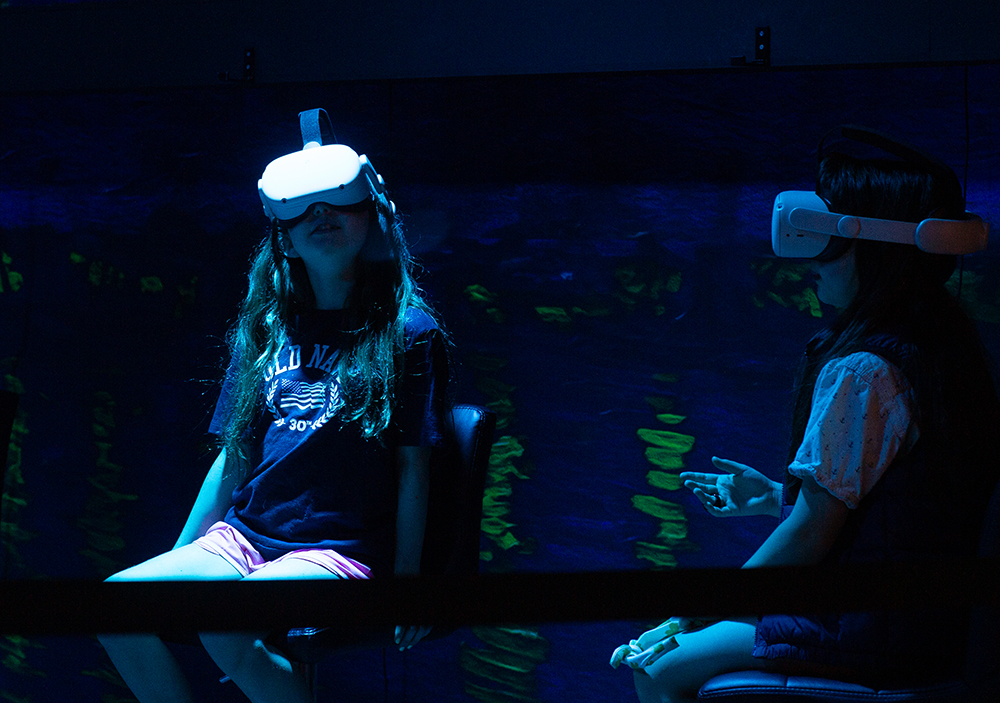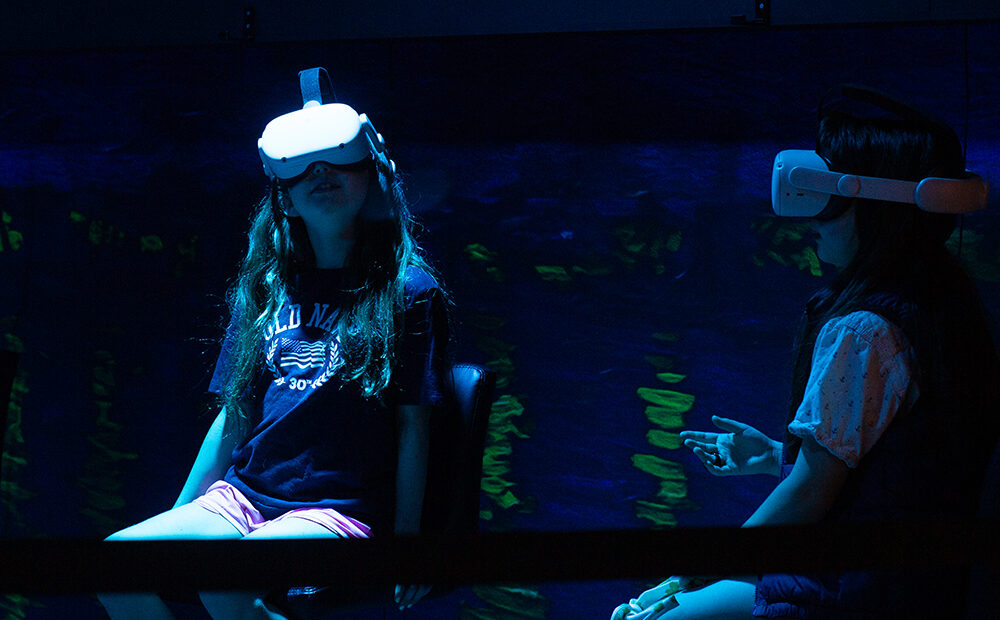
‘Van Gogh: The Immersive Experience’ invites guests to engage in new ways
Watch
Listen
(Runtime 3:37)
Read
In a dark room, a wall of sunflowers painted by Vincent Van Gogh seem to almost glow as visitors stroll past, examining the prints.
In the next room, a woman is taking photos of her grandchildren in a life-size recreation of the artist’s bedroom, painted in 1888 while he stayed in the “Yellow House” in Arles, France. In another corner, Van Gogh’s self-portraits are projected onto a 9-foot tall bust of the artist.
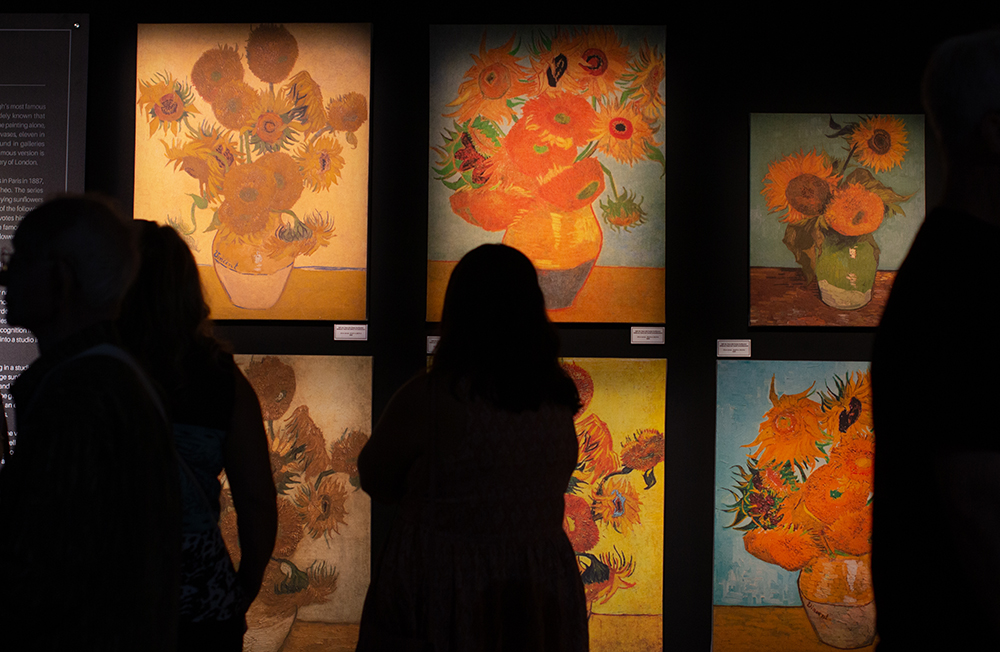
A visitor looks at sunflower paintings by Vincent Van Gogh at “Van Gogh: The Immersive Experience” on July 29 in Spokane. (Credit: Rachel Sun / NWPB)
Farther along is what John Zaller, the executive producer of “Van Gogh: The Immersive Experience,” described as the “crown jewel” of the exhibit. It’s an immersive gallery where Van Gogh’s artwork is projected ceiling to floor, bathing the room and visitors in shifting images of his paintings.
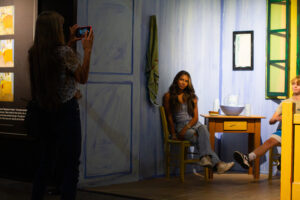
Christy Reich takes photos of grandchildren Cassia Enson and Callen Woods in a recreation of Vincent Van Gogh’s painting “The Bedroom” at “Van Gogh: The Immersive Experience” on July 29 in Spokane. (Credit: Rachel Sun / NWPB)
Zaller worked with distributor Exhibition Hub to bring the exhibit to international audiences, which now includes Spokane.
A particular highlight of the tour is experiencing one of Van Gogh’s most famous works, “Starry Night,” in the immersive gallery, Zaller said.
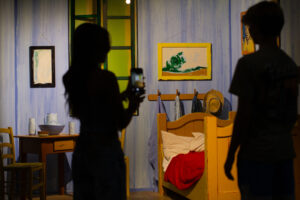
Cassia Enson and Callen Woods take photos of a recreation of Vincent Van Gogh’s painting “The Bedroom” at the exhibit. (Credit: Rachel Sun / NWPB)
The work, which Van Gogh painted from memory based on the view from his window at an asylum where he stayed from 1889 to 1890, shows turbulent, rotating stars.
In 2004, NASA’s Hubble Space Telescope captured an image of an expanding halo of light around the star V838 Monocerotis that closely mirrored the swirls in Van Gogh’s painting.
“It took several years for the light to cross across these stars, but they were literally glowing in almost the exact same shape as Van Gogh stars in the ‘Starry Night’ painting,” Zaller said. “He was channeling the universe in that way, as he was creating his artwork.”
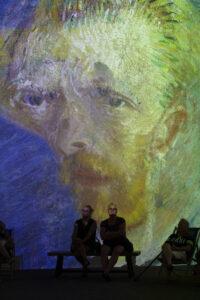
Visitors sit in an immersive gallery viewing floor-to-ceiling projections of Vincent Van Gogh’s artwork. (Credit: Rachel Sun / NWPB)
The self-guided tour puts guests in an “experience funnel,” starting with a more traditional exhibit of the artist’s work with information about his life and inspirations before moving into increasingly immersive experiences, Zaller said.
“Our goal is to make the content as accessible as possible, so we do that through a number of different methods,” he said.
Nayeli Perez, who came with her friend and grandparents, said she especially enjoyed the virtual reality tour. The VR tour invites guests to look at the world through Van Gogh’s eyes, bringing them to eight locations in the south of France that inspired iconic paintings by the artist.

A visitor looks at artwork by Vincent Van Gogh at “Van Gogh: The Immersive Experience.” (Credit: Rachel Sun / NWPB)
“I did really like the VR thing because it looked like you’re actually going through the paintings. My favorite part was probably the part where you’re walking through a village, or the one with all the wheat and hay,” she said, referring to the part of the tour covering “The Siesta,” painted around 1889.
The exhibit, which appeals to visitors with a broad range of ages and experiences, brings a greater understanding of Van Gogh’s art and the artist as an individual, Zaller said, including his struggles with mental health.
In the years since Van Gogh’s death, experts have suggested he showed signs of mental illness, possibly including bipolar disorder, psychosis and insomnia.
Guests often wonder how the artist might have fared with better interventions available today, Zaller said, finding a new appreciation for the work he created despite his struggles.
“One of the things that’s striking about that is what he did with those challenges. He tried to channel that pain into creating beautiful art,” he said. “Van Gogh chose to deal with them by seeking the beautiful and creating the beautiful. And he did it in his own unique way, which led to a revolutionary painting style that’s never really been replicated since.”
Tickets for “Van Gogh: The Immersive Experience” are available online at vangoghexpo.com/spokane. Group packages, as well as educational material for K-12 school groups, homeschoolers and summer camps also are available.
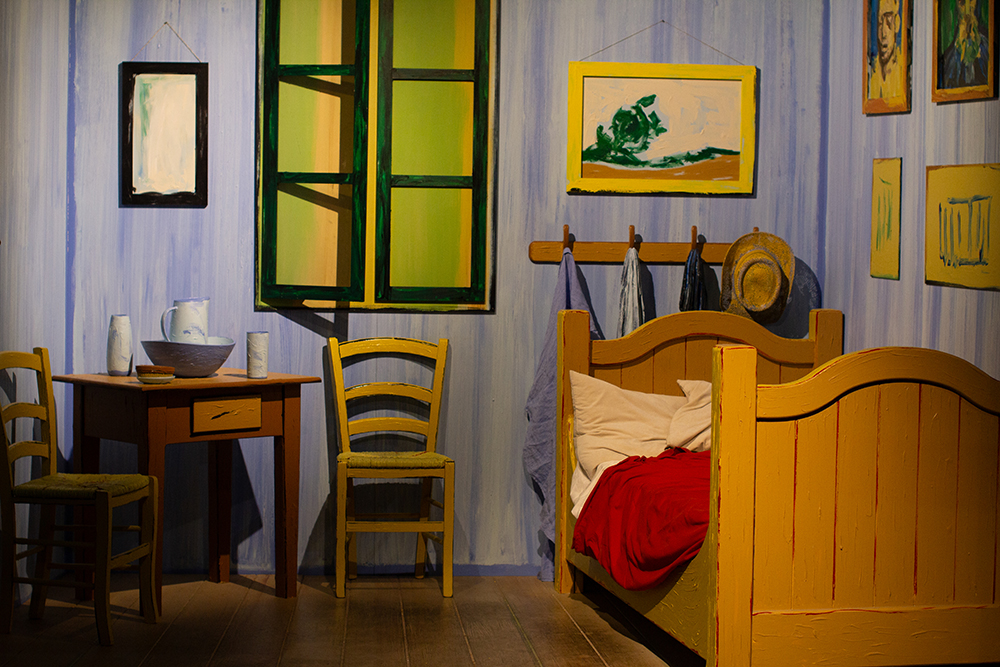
An interactive recreation of Vincent Van Gogh’s painting “The Bedroom” at “Van Gogh: The Immersive Experience” in Spokane. The recreation invites guests to sit inside the painting and take photos. (Credit: Rachel Sun / NWPB)

